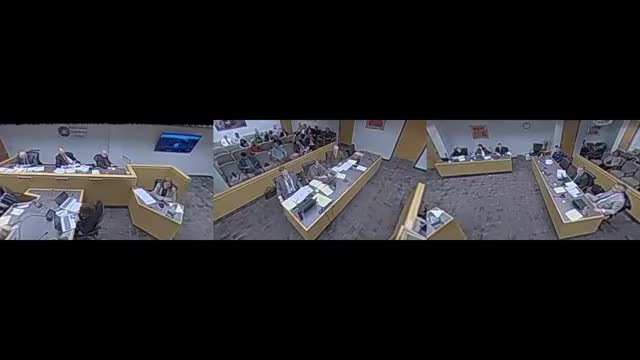Commissioner Harvey questions Pacificor on cost allocations from 2020 wildfires
March 23, 2025 | Utah Public Service Commission, Utah Subcommittees, Commissions and Task Forces, Utah Legislative Branch, Utah
This article was created by AI summarizing key points discussed. AI makes mistakes, so for full details and context, please refer to the video of the full meeting. Please report any errors so we can fix them. Report an error »

On March 23, 2025, a significant government meeting took place in Utah, focusing on the Phase III Hearing regarding the DAO Docket Issues related to RMP's Rate Case (24-035-04). This session was marked by discussions that could have far-reaching implications for energy regulation and cost allocation in the region.
The meeting primarily addressed the complexities surrounding cost recovery and allocation following the merger of Utah Power and Light with Pacific Power. A key point of discussion was the potential for Pacificor to seek recovery of costs that exceed insurance limits in the event of claims and settlements. This raises important questions about financial responsibility and risk management in the energy sector, particularly in light of past incidents such as the wildfires in 2020.
Commissioner Harvey sought clarification on various aspects of cost allocation, emphasizing the need for straightforward answers. The discussions revealed that Pacificor has established comprehensive agreements that guide cost allocation across multiple states. However, there remains a notable exception with Washington, which has unique regulatory considerations.
A significant theme was the guiding principles that Pacificor uses to determine whether costs should be classified as system costs or assigned to specific states. The company indicated that costs incurred to implement state-specific policies would typically be assigned to those states, while costs associated with broader system benefits would be allocated across the entire system. This distinction is crucial as it affects how costs are distributed among consumers and could influence future energy pricing strategies.
The conversation also touched on the impact of geographical factors on cost allocation. While geography can influence the costs associated with infrastructure, such as transmission lines, the overarching principle is that costs providing system-wide benefits are generally allocated systemically. This nuanced understanding of cost allocation is essential for stakeholders as they navigate the complexities of energy regulation and strive for equitable solutions.
In conclusion, the discussions from the Phase III Hearing highlight the ongoing challenges and considerations in energy regulation, particularly regarding cost recovery and allocation. As the regulatory landscape continues to evolve, the outcomes of these discussions will likely shape the future of energy pricing and policy in Utah and beyond. Stakeholders will be closely monitoring the developments from this meeting as they prepare for potential changes in the regulatory framework.
The meeting primarily addressed the complexities surrounding cost recovery and allocation following the merger of Utah Power and Light with Pacific Power. A key point of discussion was the potential for Pacificor to seek recovery of costs that exceed insurance limits in the event of claims and settlements. This raises important questions about financial responsibility and risk management in the energy sector, particularly in light of past incidents such as the wildfires in 2020.
Commissioner Harvey sought clarification on various aspects of cost allocation, emphasizing the need for straightforward answers. The discussions revealed that Pacificor has established comprehensive agreements that guide cost allocation across multiple states. However, there remains a notable exception with Washington, which has unique regulatory considerations.
A significant theme was the guiding principles that Pacificor uses to determine whether costs should be classified as system costs or assigned to specific states. The company indicated that costs incurred to implement state-specific policies would typically be assigned to those states, while costs associated with broader system benefits would be allocated across the entire system. This distinction is crucial as it affects how costs are distributed among consumers and could influence future energy pricing strategies.
The conversation also touched on the impact of geographical factors on cost allocation. While geography can influence the costs associated with infrastructure, such as transmission lines, the overarching principle is that costs providing system-wide benefits are generally allocated systemically. This nuanced understanding of cost allocation is essential for stakeholders as they navigate the complexities of energy regulation and strive for equitable solutions.
In conclusion, the discussions from the Phase III Hearing highlight the ongoing challenges and considerations in energy regulation, particularly regarding cost recovery and allocation. As the regulatory landscape continues to evolve, the outcomes of these discussions will likely shape the future of energy pricing and policy in Utah and beyond. Stakeholders will be closely monitoring the developments from this meeting as they prepare for potential changes in the regulatory framework.
View full meeting
This article is based on a recent meeting—watch the full video and explore the complete transcript for deeper insights into the discussion.
View full meeting

